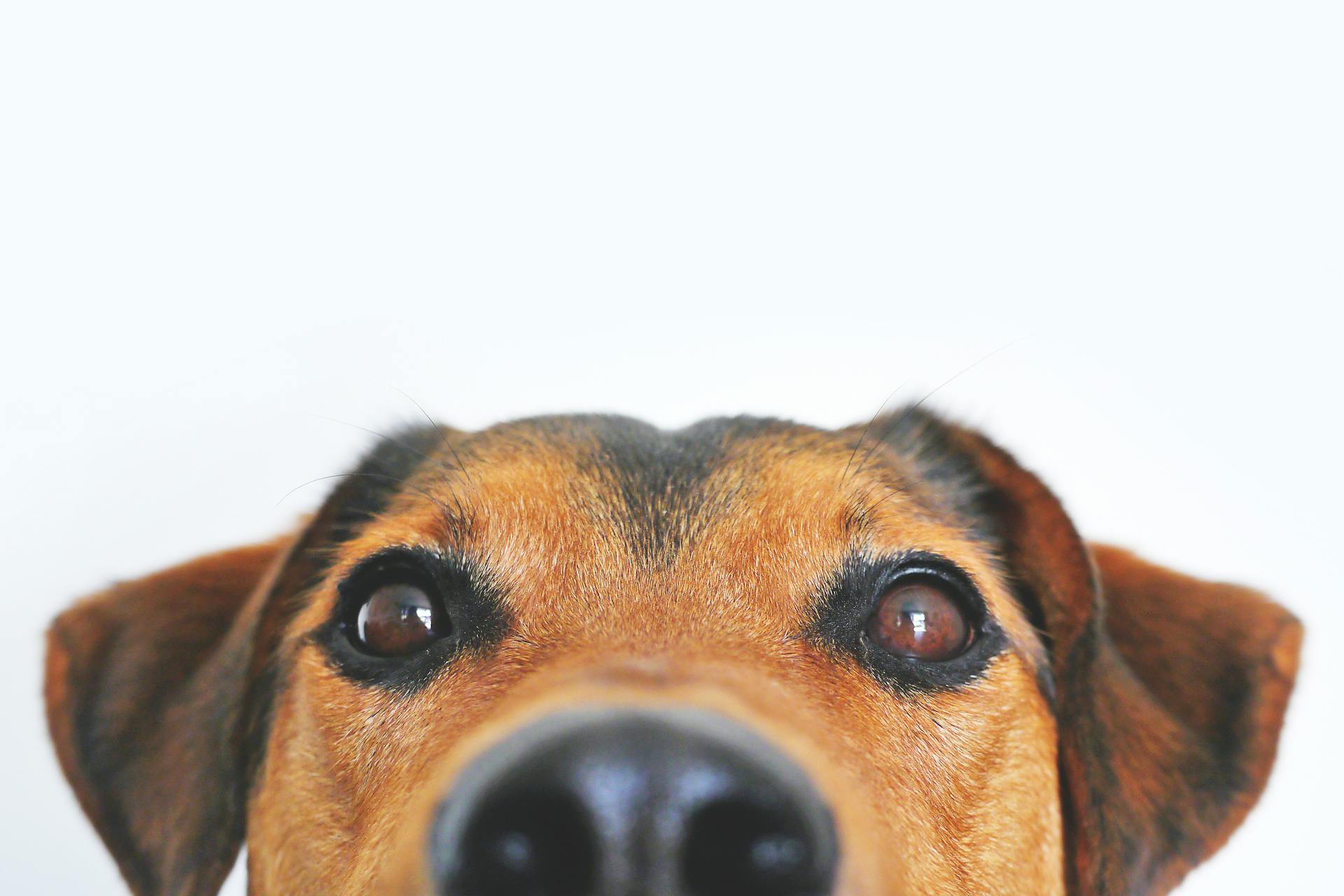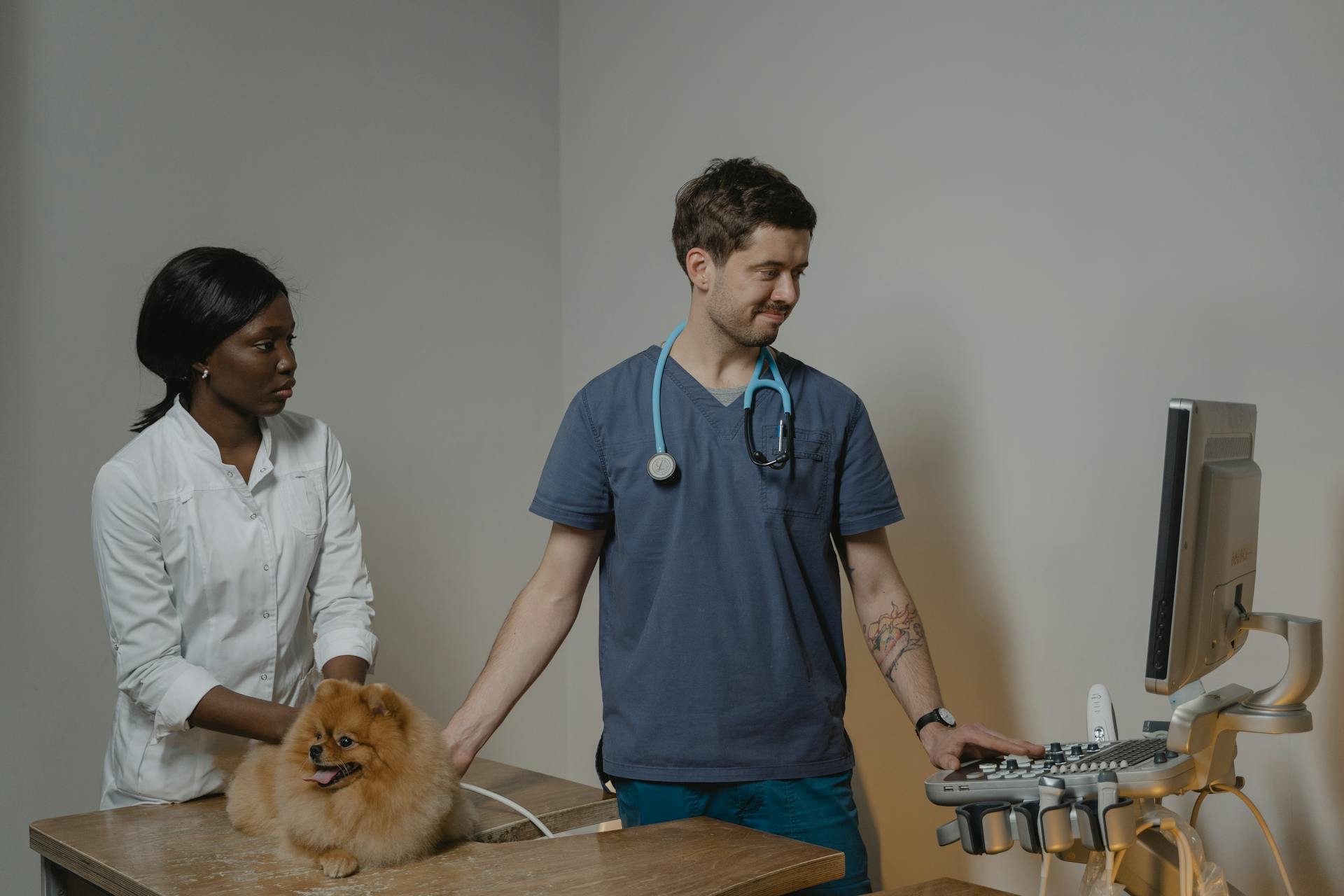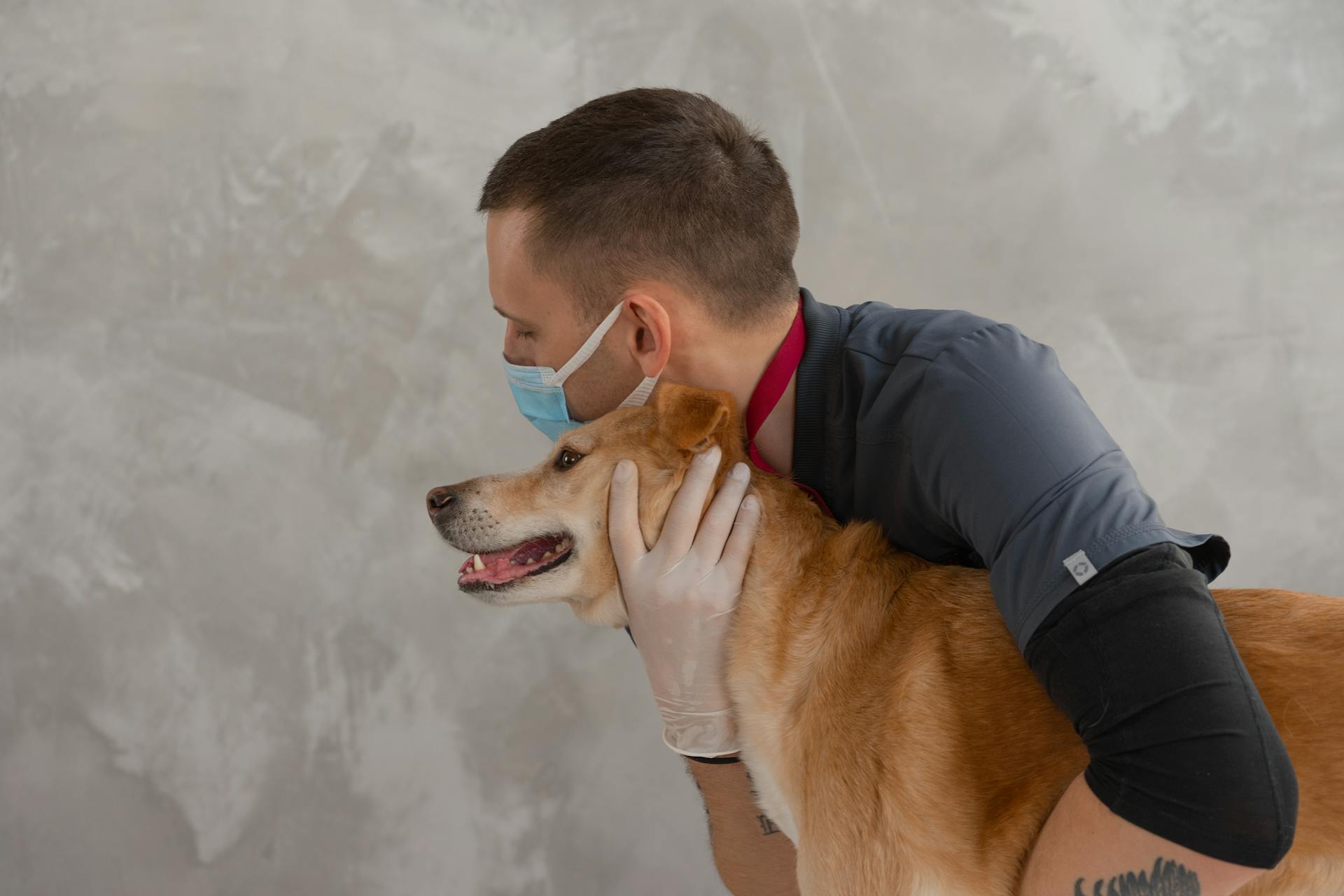
A dog testicular lump can be a concerning discovery for any pet owner.
Symptoms of a testicular lump in dogs may include swelling or a noticeable mass in one or both testicles.
The mass may be firm or soft to the touch and can be accompanied by other symptoms such as pain or discomfort in the groin area.
Your veterinarian will likely perform a physical examination to diagnose a testicular lump, which may include a rectal examination to check for any abnormalities.
A definitive diagnosis is often made through surgical removal and examination of the affected testicle.
Causes and Risk Factors
Dogs with undescended testicles are more than ten times more likely to develop testicular cancer than dogs with normal testes development.
Cryptorchidism, or the absence of one or both testes from the scrotum, is one of the most important contributing factors to testicular cancer in canines.
Age is also a significant risk factor, as older dogs are more prone to developing testicular tumors.
Exposure to environmental carcinogens, such as chemicals like herbicides, dioxin, or tetracycline, can also contribute to the development of testicular cancer in dogs.
Infection, radiation exposure, and advanced age can also increase the likelihood of testicular cancers developing in your male dog.
Here are some specific risk factors for testicular cancer in dogs:
- Undescended testicles
- Advanced age
- Exposure to chemicals
- Infection
- Radiation exposure
Symptoms and Diagnosis
A dog testicular lump can be a serious issue, and it's essential to be aware of the symptoms and diagnosis process. If your dog shows any signs of not being well, take them to a veterinarian for examination.
Some possible symptoms of a testicular lump in dogs include swelling in one or both testicles, a mass or lump in or on a testicle, testicle skin discoloration, and behavioral changes. These symptoms can be accompanied by other non-specific signs of illness like lack of appetite, lethargy, or weight loss.
A veterinarian will perform a physical exam to check for signs like swellings or a change in size or appearance of your dog's testicles. They may also recommend a scrotal ultrasound, complete blood count, urinalysis, x-rays, or CT scan to confirm the diagnosis.
Take a look at this: Healthy Mind Canine - Separation Anxiety Training
Here are some diagnostic techniques that may be used to confirm a dog testicular lump:
Symptoms of Cancer
A mass or lump in or on a testicle is a clear sign of testicular cancer in dogs. This can be a single lump or multiple lumps.
Swelling in one or both testicles is another symptom of testicular cancer. This swelling can be caused by a tumor or an infection.
Testicle skin discoloration can also be a sign of testicular cancer. This discoloration can be darkening of the skin or changes in skin color.
Behavioral changes in your dog can also indicate testicular cancer. This can include changes in appetite, lethargy, or weight loss.
Here are some additional symptoms of testicular cancer in dogs:
- Penis atrophy and feminization
- Elonated nipples and breasts
- Squatting to pee
- Symmetrical hair loss
- Lack of sex drive
- Male dog interest in your male dog
These symptoms can be caused by the overproduction of estrogen by testicular tumor cells. If you notice any of these symptoms in your dog, it's essential to take them to the vet for a check-up.
Canine Diagnostic Techniques

Your veterinarian will typically start by getting a verbal history from you and performing a physical examination, including a close look at the tumors and the surrounding area.
A tissue sample will be obtained for microscopic examination, and a complete blood count, biochemistry profile, and urinalysis will be done to reveal any underlying or concurrent medical issues.
Fine needle aspiration cytology is useful in screening for regional and distant metastasis, and rectal palpation can denote regional lymph node enlargement if present.
A complete blood count is taken to examine hematologic abnormalities associated with hyperestrogenism.
Abdominal ultrasound can identify non-descended testicles and regional lymph nodes, while testicular ultrasonography is helpful in differentiating between malignant conditions or cancer cells.
Here are some diagnostic techniques your veterinarian may use:
- Fine needle aspiration cytology
- Rectal palpation
- Complete blood count
- Abdominal ultrasound
- Testicular ultrasonography
These tests can help determine the presence and extent of the tumor, and guide further treatment options.
Types of Cancer
There are several types of testicular cancer that can affect dogs, and it's essential to understand the different types to determine the best course of action.
Seminomas are the most common type of testicular cancer in dogs, accounting for 40% of all cases. They can occur in both inguinal and abdominal cryptorchid testicles.
Leydig cell tumors, also known as LCT, are the second most common type of testicular cancer in dogs, making up 29.1% of all cases. They can also occur in both inguinal and abdominal cryptorchid testicles.
Sertoli cell tumors, or SCT, are another common type of testicular cancer in dogs, accounting for 27.7% of all cases. They can occur in inguinal cryptorchid testicles but are less common in abdominal cryptorchid testicles.
Mixed germ cell-sex cord stromal tumors, or MGSCT, are a less common type of testicular cancer in dogs, making up only 3.2% of all cases. They can occur in inguinal cryptorchid testicles but are rare in abdominal cryptorchid testicles.
Here's a summary of the most common types of testicular cancer in dogs:
It's worth noting that some dogs may have more than one type of testicular cancer, and the most common combination is seminoma and LCT.
Treatment and Recovery
Most primary testicular tumors in dogs are non-metastatic, and orchiectomy, which is the removal of one or more testicles or testes, is the treatment of choice for localized tumors.
Keeping the surgical site clean and free from dirt and debris is essential, and you'll need to keep your dog from interfering with the area.
Your veterinarian may give you specialized feeding and care instructions to facilitate healing, and you'll need to bring your dog back in about ten to fourteen days to evaluate the healing process.
A calm, quiet environment will help encourage healing, and having food and water within your dog's reach can also promote recovery.
Treatment
Treatment is a crucial step in helping your furry friend recover from testicular tumors. Most primary testicular tumors are non-metastatic, which is great news.
The treatment of choice for dogs with localized tumors is orchiectomy, which involves the removal of one or more testicles or testes, along with scrotal ablation. This procedure is usually effective in removing the tumor.
Recovery

Recovery is a crucial part of the healing process, and it's essential to keep the surgical site clean and free from dirt and debris. This will help prevent infection and promote healing.
You'll need to keep an eye on the site for any signs of swelling, bleeding, or pus, and examine it often over the next two or three weeks. This is a critical period, and monitoring the site closely will help you catch any potential issues early on.
Keeping your pet in a calm, quiet environment will also help encourage healing. This means minimizing stress and providing a peaceful space for them to recover.
Having food and water within their reach is also vital, as it will help prevent dehydration and malnutrition. Your veterinarian may provide specialized feeding instructions to facilitate healing.
You'll likely need to bring your pet back in to evaluate their healing progress in about ten to fourteen days. This is a routine check-up to ensure the site is healing properly and to check for any signs of recurrence or metastasis.
You might enjoy: How to Help Dogs with Skin Allergies
Frequently Asked Questions
What does a testicular tumor look like on a dog?
A testicular tumor in a dog may appear as a nodular enlargement of the testicle, unevenly sized testicles, or generalized swelling of the scrotum. However, many dogs with testicular tumors show no obvious clinical signs.
Is testicular cancer in dogs fatal?
Testicular cancer in dogs is generally curable with surgery, but the prognosis depends on the severity of the disease and overall health of the pet. In severe cases, surgery may not be enough to ensure survival.
At what age do dogs get testicular cancer?
Testicular tumors in dogs are most commonly found in males over 10 years old. Certain breeds, such as German Shepherds and Afghan Hounds, are also at higher risk.
At what age do male dogs get testicular cancer?
Male dogs typically develop testicular cancer at an older age, usually over six years old. This age group is more susceptible to the condition, which may be linked to factors such as undescended testicles and prostatic disease.
Does testicular cancer spread fast in dogs?
Testicular cancer in dogs tends to grow slowly, with only a small percentage of cases spreading to other parts of the body. Metastasis rates are reported to be between 6% and 20% of cases.
Sources
- https://vcahospitals.com/know-your-pet/testicular-tumors
- https://wearethecure.org/learn-more-about-canine-cancer/canine-cancer-library/testicular-tumors/
- https://www.scielo.br/j/pvb/a/RXCDQJzbjSbrZGYX3xY99Yf/
- https://wagwalking.com/condition/testicular-tumor-seminoma
- https://www.dogsnaturallymagazine.com/testicular-cancer-in-dogs/
Featured Images: pexels.com


